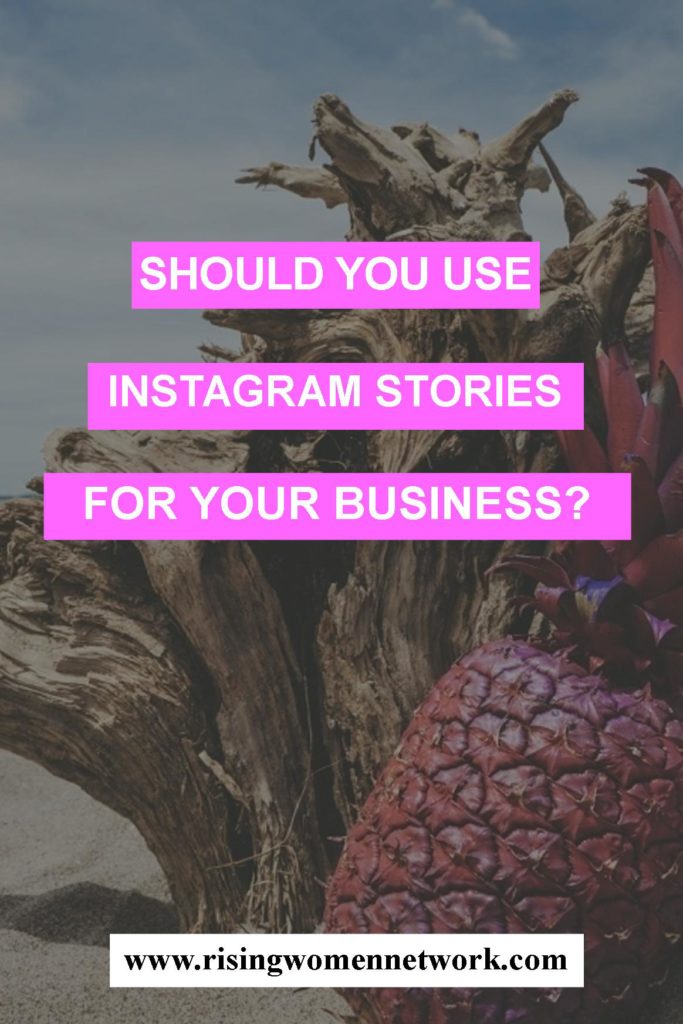Instagram Stories are here, and they’re already huge. Almost identical to Snapchat stories, Instagram users can now share a series of photos or videos with their followers that will disappear after 24 hours. The change has left many brands, influencers, and content creators confused: should you use Instagram Stories, Snapchat, or both?
Between Instagram engagement decreasing by 33% and the roll-out of the new Instagram algorithm feed, marketers and users alike started to look towards the next big thing: Snapchat. Scared that Instagram would go the way of Facebook’s pay-to-play system, everyone got to work on growing their Snapchat audience. Brands scrambled to figure out what they would use this new channel for, and suddenly “behind-the-scenes” content and puppy filters became incredibly important for your social media strategy. We were all convinced that in order to be relevant you had to be active on Snapchat, and then Instagram Stories happened.
One of the biggest challenges about using Snapchat for business is discovery; it’s incredibly hard to find people to follow, and you can’t casually browse content like you can on Instagram. The only way to view a Snapchat story is to commit to adding the user to your friends list, and adding them is not exactly easy. You have to know their username, which for some reason is usually different than the rest of their social media handles, and there’s no “search” functionality in Snapchat. Basically, you have to work to add someone on Snapchat.
Brands, influencers, and content creators have spent years building up their Instagram following, and everyone has found it difficult to now move those hard-earned followers over to Snapchat. This is why you have seen so many people adding their Snapchat name to their Instagram bio, teasing Snapchat content on Instagram, or just posting their Snapchat ghost. (Who could forget those two weeks when you couldn’t open social media without seeing an obnoxious yellow QR code everywhere?).
The Incredible Reach of Instagram Stories
The biggest advantage that Instagram Stories has over Snapchat is that you don’t need to build a new audience. With the touch of a button, you’re able to share Snapchat-like content with all of your followers, and considering Instagram has over 500 million active monthly users, you’ll automatically have way more reach using Instagram Stories over Snapchat. “If you’re a business, if you’re a celebrity, if you’re an interest-based account, you can have a giant audience,” says Instagram CEO Kevin Systrom. “It’s going to feel very different.”
Learn more: How to Use Instagram Stories for Business
Instagram Stories was just launched this week, and we don’t know if it will become a success. In order for Instagram Stories to work for businesses, Instagram Stories need to work for their individual users. People need to love posting stories to Instagram, and love it so much they want to watch other people’s stories, including brand stories.
But It’s Still Not Snapchat
Putting Snapchat inside of Instagram doesn’t change the fact that it’s still Instagram, and the people you follow and interact with on Instagram are most likely different than the people you interact with on Snapchat.
Instagram has become the highlight reel of our lives, featuring the perfectly curated moments we want to remember forever on our feed. Snapchat has found success by being the exact opposite of that — remember how it started as just a “sexting” app? Since the beginning, Snapchat has created an ephemeral environment where users didn’t obsess about what they were sharing, and Snapchat made sharing “real life” moments fun. Think about the content that’s popular on Snapchat: selfie filters, face swaps, and decorating mundane moments with cute stickers. Totally different from the beautifully edited and over-filtered world of Instagram, where posting too often is a faux pas and teens delete Instagram posts if they don’t get enough likes.
Plus…your mom’s on Instagram. 73% of Snapchat users are millennials, and just like how Instagram became cool as a way to avoid the moms of Facebook, Snapchat is a place for teens and young adults to just be themselves, without parental supervision. Snapchat is also a place where people are less concerned about what their posting, unlike the public world of Twitter, Instagram, and Facebook. Snapchat personality Jay Melilli posted a story saying that “Instagram is still too public for my taste,” and explained that he felt more comfortable sharing his day-to-day life on Snapchat over Instagram, and he’s not alone.
I have a hard time imagining teens and millennials actively sharing content on Instagram like they would on Snapchat, because moms aren’t able to creep you on Snapchat without adding you first. Instagram Stories are extremely public; you don’t need to be following someone to view their story, you can just tap the avatar on anyone’s Instagram profile to see what they’re up to. Over 100 million people use Snapchat every week(more than Twitter), so while Instagram Stories will probably take a bit out of Snapchat, it’s not going to go anywhere.
But that doesn’t mean that Instagram Stories won’t work for your business, because adults are going to love it. Anyone who has heard about Snapchat but hasn’t tried it yet, or tried it but couldn’t understand how it works, will be excited to start “snapchatting” on Instagram. If the target market for your business is anyone not in their teens and twenties, Instagram Stories could be huge for you. It’s an easy way for you to engage with your audience more, show new products, answer questions, and market your business with little effort. You don’t need to invest in the painstaking task of trying to turn Instagram followers into Snapchat friends, and you don’t have to create ongoing content for Snapchat just for the sake of having Snapchat content. Instead, you can use your time to invest in growing your overall Instagram audience, and just hang out with them on Instagram whenever you feel like it. Because, let’s face it: using Snapchat for business is HARD.
That being said, if you’re a business that has already found success on Snapchat, or is at least starting to, don’t give up now. Having an engaged community is more valuable than video views, and your Instagram followers didn’t opt-in to follow your story like your Snapchat followers did. The truth is, the people who follow you on Instagram just might not be interested in your Snapchat-like content. They signed up to follow you for your photos, brand, or style; not your on-camera personality.
It’s All About Your Community
When Instagram Stories came out, photographer and social media influencer Jeff Mindell posted a series of videos on both his Instagram and Snapchat story about the topic. Like many content creators, he was confused about where he should invest his time and effort. In the end, he decided that Snapchat wasn’t going anywhere, despite the fact that he got more views with his Instagram stories.
“For me, it’s not really about the numbers. It’s 100% about the community,” Jeff explained. “If I really think about it, I did not make the conscious decision to follow 300 people on their version of Instagram. It feels like all of a sudden that decision was made for me,” he said. “I’m not saying I won’t be using the new Instagram Stories, I’d be lying if I said it wasn’t cool, but it’s not where my most dedicated audience is.”
So, what does this all mean for you? Every business is different, and it really comes down to what’s best for you and your community. If you’re doing great on Snapchat, keep it up. If your audience is older, and you either haven’t tried Snapchat or just aren’t seeing success with it, maybe it’s time to double down and get serious about your Instagram strategy.
If there’s one thing we can learn from Vine, it’s that Instagram is not an idle threat. Instagram video is now second-nature to the app, but it was introduced as a way to compete with Vine’s video-sharing popularity. Instagram Stories has given new life to Instagram, and as much as I love Snapchat, I think it’s important to evaluate why you want to be on Snapchat before committing to the platform. If it’s just because you’re afraid of missing out on the next big thing, it might be time to think again.
Get started using Instagram for business today with our FREE workshop!
Introduction to Instagram for Business





